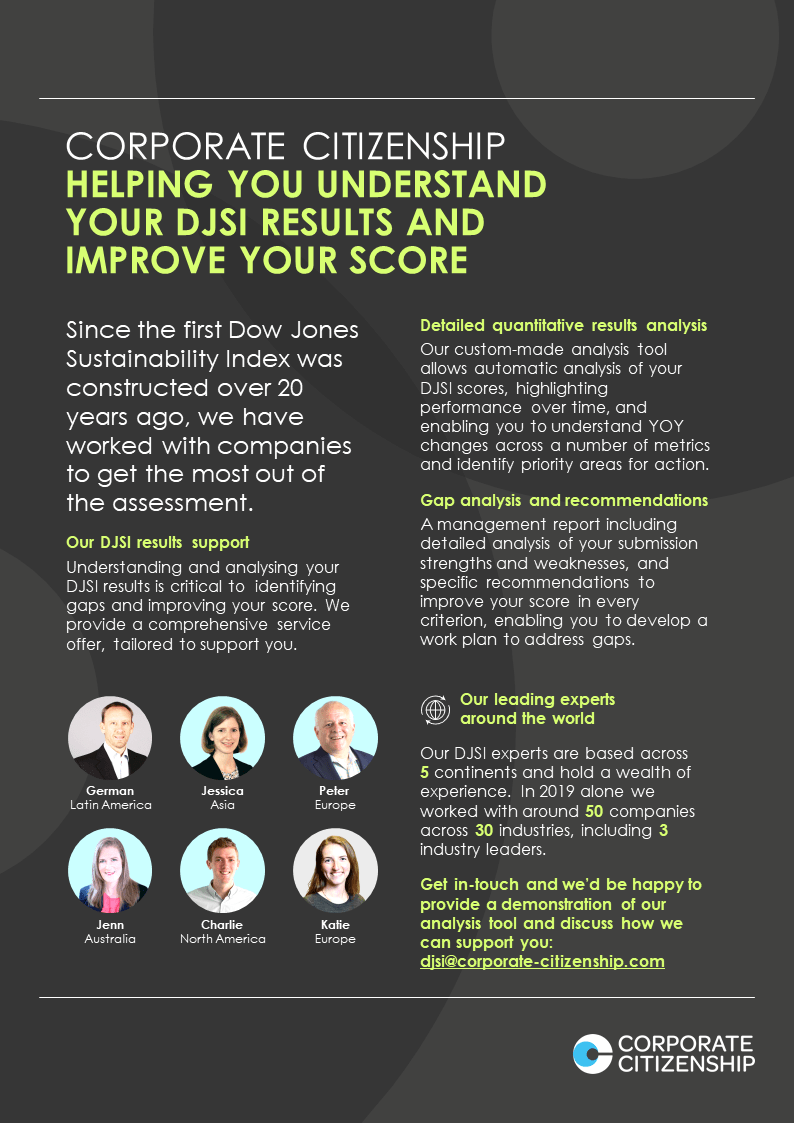For many companies, Dow Jones Sustainability Index (DJSI) means two important activity peaks per year, one during the submission of the CSA questionnaire, and the second when DJSI results are announced – which is right around the corner now.
However, much of the value that DJSI can deliver to a company actually comes during the valleys between these two peaks. Indeed, DJSI can and should be leveraged as a benchmarking tool that helps to drive continuous improvement across the different functions, as the examples below demonstrate, both at tactical and strategic level.
The CSA questionnaire includes some simple, yet powerful questions. I recall the case of a fast-moving consumer goods company that was quick to produce a full list of the social benefits that came from their philanthropic efforts. And what about the business benefits? Blank stare.
While that might be an exception, in our experience there are a handful of questions that tend to remain unanswered. Most companies can readily inform how much they spent in employee development programs, or environmental investments in any given year. Yet when faced with the simple question about the return of such investments, the usual response is “hmm, interesting” or the classic “let me get back to you on that”.
When these awkward moments prompt actions, that is when companies start to really leverage their participation in DJSI.
DJSI enables the different divisions and areas within a company to see the link between sustainability and business value. This also helps to embed sustainability across the company, instead of being siloed in a single person or area. Furthermore, since the CSA questionnaire is continually updated to reflect the latest trends and best practices, it is continuously raising the bar and posing new challenges across a company. It is undoubtedly a great vehicle to deliver tactical sustainability wins across the business.
And things get really interesting when DJSI actually helps to deliver strategic improvements. Some banks across LATAM found it quite difficult to answer the exhaustive “Sustainable Finance” criterion that appeared in the 2019 questionnaire. In a couple of cases, completing the same question in the 2020 process was much easier since those organizations had undertaken a thorough work of reviewing their processes, products and services and realized that, beyond their own operations, their privileged position at the top of the investing chain enabled them to promote and encourage sustainable development across their portfolio.
Similarly, the “Materiality” criterion tends also to drive some deep questioning. If X and Y are indeed material issues for a given company, why is it so hard to find evidence of its linkage to executive compensation? Is materiality really being used as a strategic tool to determine the key areas of focus for the company, or merely to inform the annual ESG report? Companies that address these types of powerful questions head on are really leveraging DJSI, and quite likely, will receive good news this upcoming November 13 when results are released!



